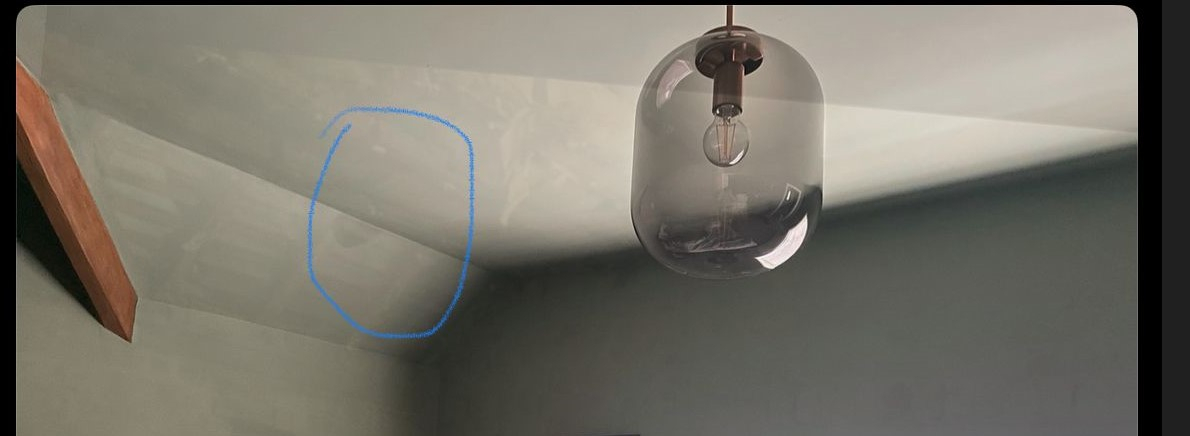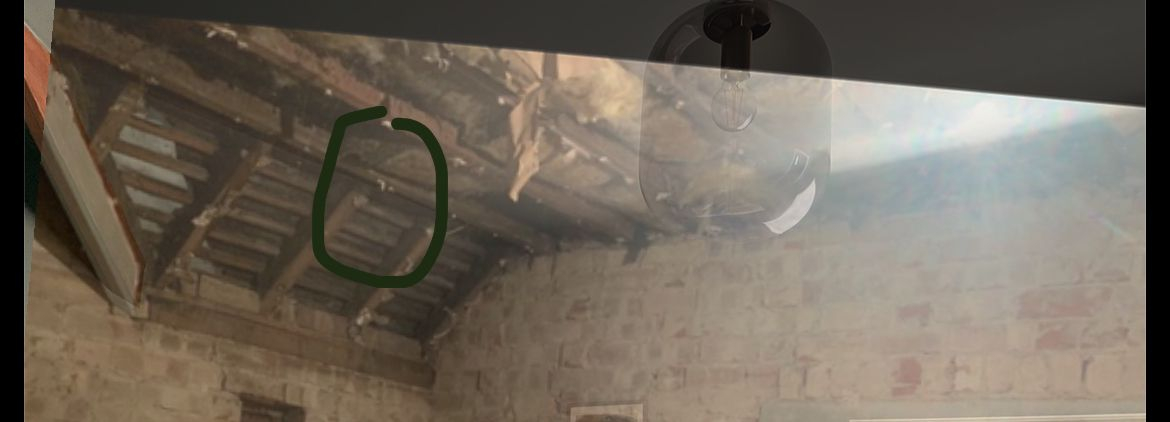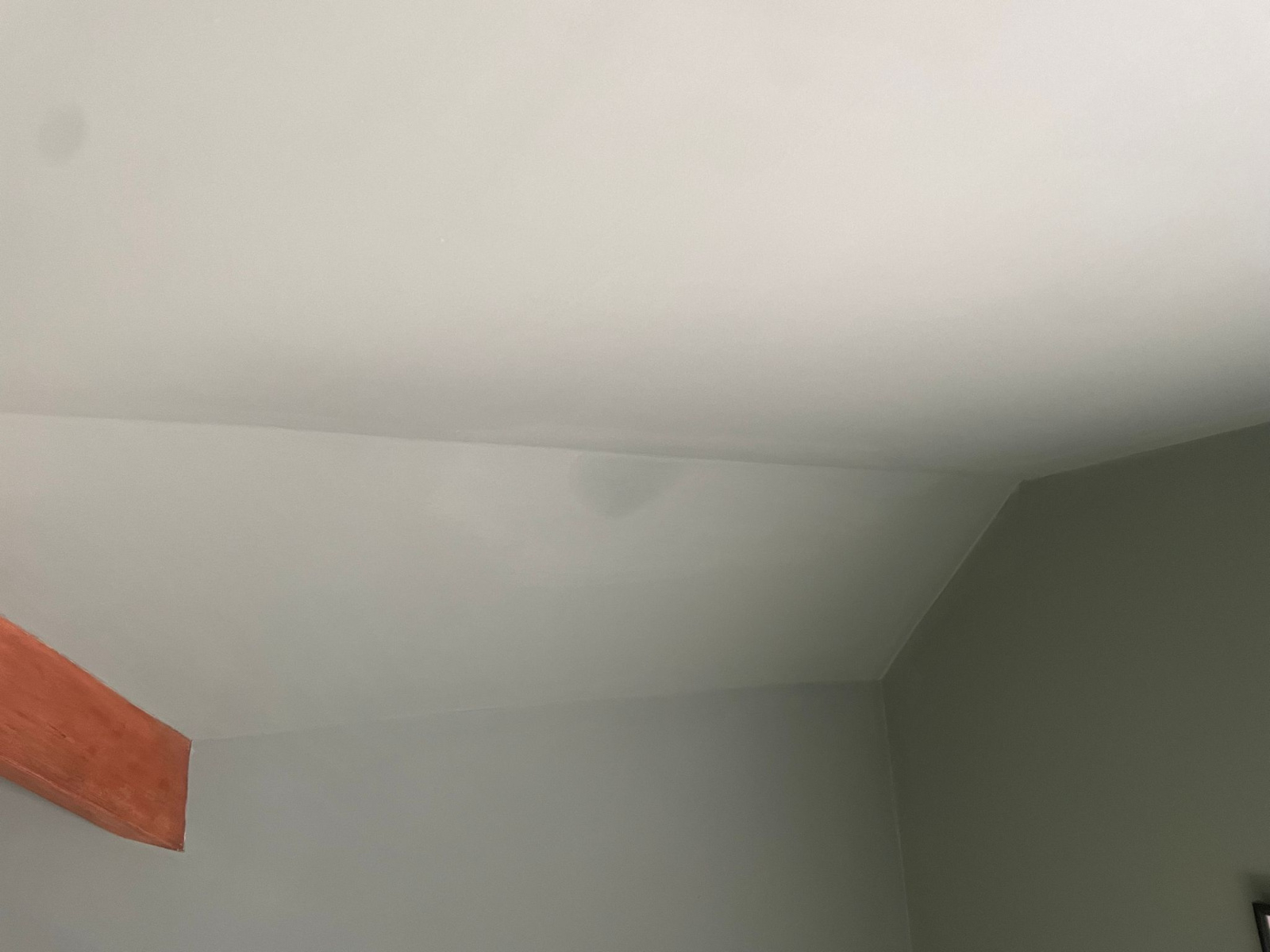We’d like to remind Forumites to please avoid political debate on the Forum.
This is to keep it a safe and useful space for MoneySaving discussions. Threads that are – or become – political in nature may be removed in line with the Forum’s rules. Thank you for your understanding.
The MSE Forum Team would like to wish you all a Merry Christmas. However, we know this time of year can be difficult for some. If you're struggling during the festive period, here's a list of organisations that might be able to help
📨 Have you signed up to the Forum's new Email Digest yet? Get a selection of trending threads sent straight to your inbox daily, weekly or monthly!
Has MSE helped you to save or reclaim money this year? Share your 2025 MoneySaving success stories!
Leak or Condensation? - Wet Patch on Sloped Ceiling
Parnface
Posts: 4 Newbie


I have a persistent wet patch on the sloped ceiling of my bedroom.
We have had some tiles replaced on the roof so don't *think* it's a leak..
it also seems to stay damp during long dry periods and doesn't seem to spread any further, it just sometimes looks wetter than others.
Looking at photos from before we had the plaster boarding done, the area isn't insulated. It is below the loft and therefore can't be accessed.
With this in mind we are wondering if it is condensation forming.
Any ideas on this and how it could be fixed would be appreciated!




We have had some tiles replaced on the roof so don't *think* it's a leak..
it also seems to stay damp during long dry periods and doesn't seem to spread any further, it just sometimes looks wetter than others.
Looking at photos from before we had the plaster boarding done, the area isn't insulated. It is below the loft and therefore can't be accessed.
With this in mind we are wondering if it is condensation forming.
Any ideas on this and how it could be fixed would be appreciated!




0
Comments
-
It's quite common to get condensation there.1
-
Almost certainly it's a leak. At least, it's from actual 'water' coming from behind. So, either a leak from outside, or drips from condensation which is forming in that void above the ceiling. Most likely, tho', it's external - getting through your roof somewhere.That damp location will therefore just be where the water 'pools' or lands, and then comes through.But it isn't condensation forming from the room itself - almost certainly not. Normal internal cond, is seen as a less focused damp patch, with undefined edges, and usually accompanied by mould. It would also be found where the air currents are less, and that's the actual corners, not where a ceiling changes direction.Any thoughts of adding insulation to the ceiling, the sloping and top sections? The simplest method would be to use insulated plasterboard, ideally 2" thick, but anything will help considerably. If you are considering this, then bite t'bullet and remove that area to trace where the water is coming from. Almost certainly it'll yield much faster results than examining the outside of the roof and wondering what tortuous path the rain may be taking before it lands there.I believe that's the best suggestion. Take it as a sign that you should have insulated in the first place, and remove that p'board, find the leak, sort it, and insulate. You will not regret this.1
-
We have slopes like yours but we have never had condensation on them and looking at the photo of that wet patch, it does look like a leak of some sort.
Does the size of the patch change, e.g. does it get bigger or does it always stay there?
If it is always the same size, could it be grease of some sort? A friend had his ceiling plastered and there were small patches like yours which turned out to be grease by the plasterer and was difficult to remove!
That said, I agree with @ThisIsWeird about insulation!
2 -
stuart45 said:It's quite common to get condensation there.
Is it not a bit too 'defined' for surface cond, too sharp an edge, too circular?
0 -
As above is it definitely water ?moneysaver1978 said:We have slopes like yours but we have never had condensation on them and looking at the photo of that wet patch, it does look like a leak of some sort.
Does the size of the patch change, e.g. does it get bigger or does it always stay there?
If it is always the same size, could it be grease of some sort? A friend had his ceiling plastered and there were small patches like yours which turned out to be grease by the plasterer and was difficult to remove!
That said, I agree with @ThisIsWeird about insulation!
it also seems to stay damp during long dry periods
Does it every dry out?
You could try holding a hair dryer to it and see if it slowly shrinks?2 -
I've had similar patches on our bedroom years ago before I insulated it. That section on a ceiling often gets left out when people insulate.ThisIsWeird said:stuart45 said:It's quite common to get condensation there.
Is it not a bit too 'defined' for surface cond, too sharp an edge, too circular?
The best way to find out of a surface is getting condensation, is to use a surface thermometer. Anywhere at dew point or below will be getting it forming there. Once a material gets damp it also becomes colder.2
Confirm your email address to Create Threads and Reply

Categories
- All Categories
- 352.9K Banking & Borrowing
- 253.9K Reduce Debt & Boost Income
- 454.7K Spending & Discounts
- 246K Work, Benefits & Business
- 602.1K Mortgages, Homes & Bills
- 177.8K Life & Family
- 259.9K Travel & Transport
- 1.5M Hobbies & Leisure
- 16K Discuss & Feedback
- 37.7K Read-Only Boards


